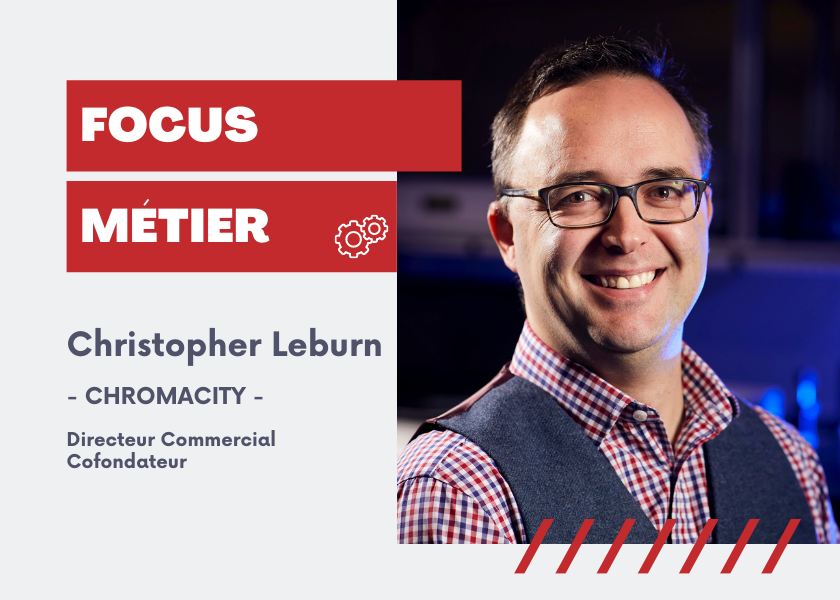

CHROMACITY allowed us to ask some questions to Christopher LEBURN, Commercial Director and Co-Founder. Here are his answers !
What is your job, and how long have you been with the company?
I am one of the three co-founders of Chromacity. In 2013, we took part in a competition organized by a Scottish incubator whose aim was to locally hatch innovative and disruptive solutions. Our project, which contained the foundations of the technology developed today by Chromacity, was successful and led to the launch of the company eight years ago.
What are your main missions?
My background within the company is intrinsically linked to all the components of the development of the ultrafast laser solutions that we offer.
A physicist by training, I had the privilege of serving as CEO of Chromacity until 2018. My goals were then to make our emerging technology viable. This has notably contributed to the development of our Optical Parametric Oscillators (OPO) which are now used by academia and industrial partners.
In 2018, I handed over the reins to Shahida Imani: with her experience in accelerating the growth of high added value companies and her relationships with multiple investors, Shahida took over as CEO of Chromacity, and I refocused on the commercial development of the company, as Commercial Director. We share the same work ethic with Shahida and together we have transformed Chromacity, growing the company from a start-up status to a key player in the market. My role is to identify the applications of today and tomorrow that will support our growth, and to support our pre-sales customers in order to provide them with a personalized service. This is especially important in these times of pandemic, and I am proud of what we have achieved over the past twelve months, including our ability to install our OPOs remotely (i.e. without the need for a of our engineers on site) for customers in key markets such as China or the United States.
What is your professional background?
I was fascinated by laser technologies at a young age, which guided my studies until my PhD in Laser Physics, completed at the University of St Andrews in Scotland. I then had the chance to work with the team who pioneered the Kerr lens mode locking for titanium:sapphire lasers, which allowed me to gain considerable experience in ultrafast laser technologies. It became obvious to me that such light sources had enormous potential for the field of life science imaging and for their corollary, the development of solutions that would improve the quality of life for patients. This became a real source of motivation and guided my post-doctoral journey, first at St-Andrews University where I had the chance to lead an interdisciplinary collaborative program involving six universities and five industrial partners. This experience developed my interest in the entrepreneurial world and the need for strong links between academics and industrials. Based on this experience, the creation of Chromacity followed.
What do you like best about your job ?
The impact our products can have on different sectors. Take our OPOs for example: they are used in FTIR spectroscopy to detect harmful chemical signatures on people, assets or the environment. The underlying standoff sensing technique has great potential for environmental surveillance but also for national security or defense issues.
Another element that I particularly appreciate is the strength of our team: each one contributes to laying solid foundations for our development. Because of this, I am particularly excited and optimistic about the future of Chromacity.
Can you tell us about a success, a concrete case on which you were able to work?
There could be many examples, but I will choose here the development of our OPOs. The first unit was delivered in 2015 to the University of Glasgow in support of a research project on single-photon superconducting detectors (SSPDs). Since then, the use cases have multiplied and applications for our OPOs now extends to the industrial sphere for areas such as those mentioned above. OPOs generate a broad bandwidth of light in the near and mid infrared regions, and their tunability makes them particularly flexible and versatile. This is truly a flagship product for us, backed by unparalleled quality of development and production. In March 2021 alone, we performed two remote installation of OPOs, one in the UK, the other in the US, in less than half a day's work each time. Speed and remote installation are two factors that are greatly appreciated by our customers, wherever they are.